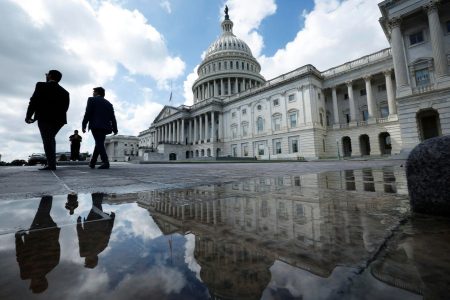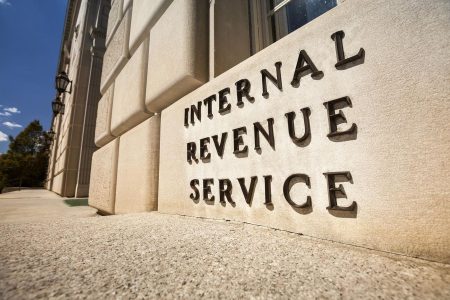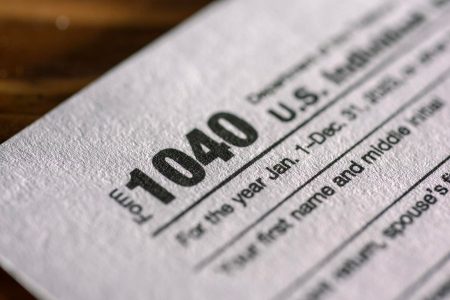Typically, when you make an early withdrawal from your retirement plan, you are socked with a 10% additional tax (an early withdrawal penalty)—unless it’s subject to an exception.
Exceptions under section 72(t) of the tax code include withdrawals that are made on or after the date you turn age 59 ½, those attributable to death or disability, distributions that are part of a series of substantially equal periodic payments made for your life or the joint lives of you and your designated beneficiary, and those made to an employee after separation from service after attainment of age 55 (other than from an IRA).
As part of the SECURE 2.0 Act, exceptions now also include distributions for emergency personal expenses and victims of domestic abuse—and the IRS has recently issued additional guidance.
Guidance
To help taxpayers and plan administrators with the exceptions, the IRS issued Notice 2024-55. The notice explains the criteria for emergency expense and domestic violence distributions.
Emergency Expenses
Emergency personal expense distributions are distributions made from an applicable eligible retirement plan (typically, a section 401(k) plan, a section 403(a) annuity plan, a section 403(b) plan, a governmental section 457(b) plan or an IRA) to an individual to meet unforeseeable or immediate financial needs relating to necessary personal or family emergency expenses.
Emergency personal expense distributions are subject to three limitations:
- You can’t treat more than one distribution per calendar year as an emergency personal expense;
- The withdrawal limit is $1,000 (not indexed for inflation) or your non-forfeitable accrued benefit under the plan less $1,000, whichever is less; and
- If you claim an emergency personal expense distribution in any calendar year, you can’t do so again during the next three calendar years unless the previous distribution is fully repaid or the aggregate of the elective deferrals and employee contributions to the plan after the distribution is at least equal to the amount of the unpaid previous distribution.
Since an emergency for one person may not be considered an emergency for another, the code provides that a plan administrator may rely on an employee’s written certification that the emergency qualifies. Some examples for guidance include medical care, accident or loss of property due to casualty, imminent foreclosure or eviction from a primary residence, the need to pay for burial or funeral expenses, auto repairs, or any other necessary emergency personal expenses.
(The notice indicates that additional guidance may provide exceptions to the rule regarding a plan administrator’s reliance on an employee’s certification and procedures for addressing cases of employee misrepresentation.)
You can repay the distributions. The rules are the same as those for repayment of qualified birth or adoption distributions. That means you can repay an emergency personal expense distribution at any time during the three-year period beginning on the day after the date on which the distribution was received.
Domestic Violence
There’s also a new section—section 72(t)(2)(K)—which provides a new exception for domestic abuse victims.
A domestic abuse victim distribution is any distribution from an applicable eligible retirement plan to a domestic abuse victim. To qualify, the distribution must be made within one year of the date on which the individual is a victim of domestic abuse by a spouse or domestic partner. The term “domestic abuse” is defined in section 72(t)(2)(K)(iii)(II) as “physical, psychological, sexual, emotional, or economic abuse, including efforts to control, isolate, humiliate, or intimidate the victim, or to undermine the victim’s ability to reason independently, including by means of abuse of the victim’s child or another family member living in the household.”
In this case, the limitation is higher—up to $10,000 (indexed for inflation) or 50% of the present value of the plan’s non-forfeitable accrued benefit (vested accrued benefit), whichever is less.
As before, the repayment rules are the same as those for repaying qualified birth or adoption distributions. That means you can repay a domestic violence distribution at any time during the three-year period beginning on the day after the date on which the distribution was received.
To meet the certification requirements, you can simply check the box on the distribution request form to certify that you are eligible for a domestic abuse victim distribution. Your certification must be in writing.
(If your retirement plan does not permit domestic abuse victim distributions, you may treat the distribution as a domestic abuse victim distribution on your federal income tax return to the extent the distribution otherwise meets the criteria.)
Income
Notably, distributions that are not subject to the 10% additional tax (early withdrawal penalty) are still included in income. Report early distributions on line 2 of Form 5329, Additional Taxes on Qualified Plans (including IRAs) and Other Tax-Favored Accounts.
According to the IRS, in tax year 2021, the latest year for which the data is available, about 608,000 individuals reported that early distributions from qualified plans (including IRAs) were not subject to the 10% additional tax.
Comments
The IRS is seeking comments on this guidance. Comments should be submitted in writing on or before October 7, 2024, and should include a reference to Notice 2024-55. You can submit your comments via the Federal eRulemaking Portal at www.regulations.gov (type “IRS Notice 2024-55” in the search field on the Regulations.gov home page to find this notice and submit comments). Or, you can old school mail your comments to Internal Revenue Service, Attn: CC:PA:LPD:PR (Notice 2024-55), Room 5203, P.O. Box 7604, Ben Franklin Station, Washington, D.C. 20044.
Comments are public.
More About SECURE 2.0 Act
SECURE 2.0 Act is a follow-up to 2019’s retirement-heavy legislation, the SECURE Act. President Biden signed the SECURE 2.0 Act into law on December 29, 2022, as part of the Consolidated Appropriations Act of 2023. SECURE 2.0 Act made several changes to existing law, including:
- Automatic Enrollment. Beginning in 2025, employers who start new retirement plans after December 29, 2022, will be required to automatically enroll eligible employees in their retirement plan—exceptions exist for small companies with ten or fewer employees, new companies, or church and government agencies. However, employees don’t have to participate and may opt out.
- Roth Account Matches. Employers can amend their existing plans to allow employees to receive vested matching contributions to Roth accounts—this is a change from when matching was only on a pre-tax basis.
- RMDs. SECURE 2.0 made several changes to RMDs (required minimum distributions). Some of the changes were confusing—and the IRS has been rolling out guidance. Last year, Notice 2022-53 noted that final RMD regulations will apply no earlier than the 2023 distribution calendar year. Notice 2023-54 added another year of relief by excusing 2023 missed RMDs for non-eligible designated beneficiaries of IRA owners who died in 2020 or 2021 after the required beginning date. And, not to be outdone, Notice 2024-35 added yet another year of relief (you can read more here).
- Qualified Charitable Distributions. Before the SECURE Act and SECURE 2.0, individuals aged 70½ or older could donate $100,000 annually to qualifying charities from their IRA—the contribution can count towards the taxpayer’s required RMD. As of 2023, that amount is indexed for inflation. Additionally, taxpayers who are 70½ or older can now make a one-time election of up to $50,000—indexed for inflation—from their IRA to a split-interest entity like a charitable remainder unitrust.
- Student Loans. SECURE 2.0 allows employers to make matching contributions to retirement plans based on employees’ student loan payments. The match amount is calculated as if the employee contributed their loan amount to the plan even if they did not make any elective contributions. (You can read more about opportunities under section 127 here.)
- 529 Plans. Beginning this year (2024), you can roll any unused 529 plan funds into a Roth IRA without a penalty. (You can read more about that here.)
Read the full article here
















